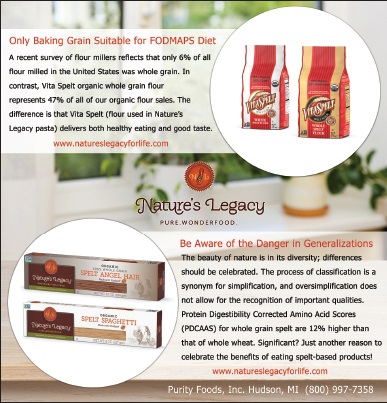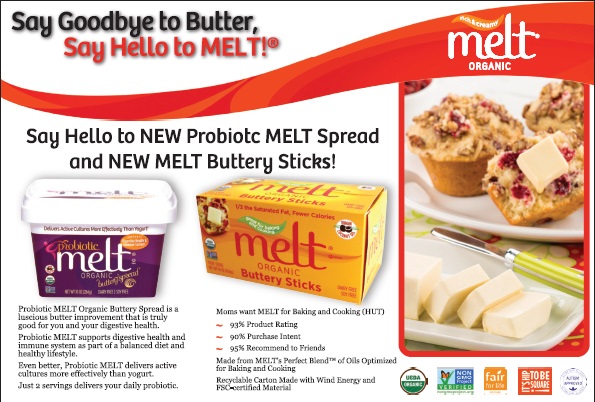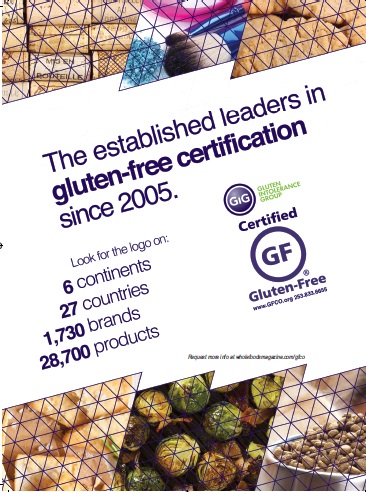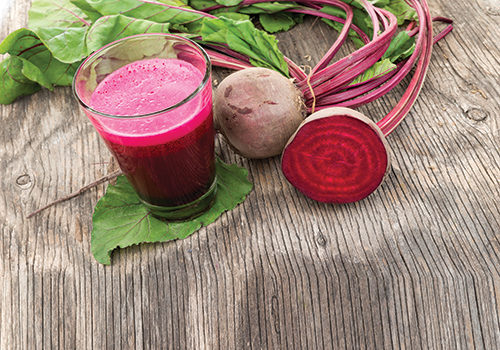There has hardly been a better time to eat as a vegan or vegetarian. Whether consumers are longtime followers, new converts or “flexitarians” dabbling in the meat or animal byproduct free lifestyle, they now have more foods and flavors to choose from.
Research at Mintel shows “12% of global food and drink products launched in 2013 carried a vegetarian claim, up from 6% in 2009.” This carries over for vegan foods as well, with the percentage of new global food and drinks carrying a vegan claim growing from 1% in 2009 to 2% in 2013 (1).
As consumers reap the benefits of this growth in vegan and vegetarian food variety, they also gain the freedom to be choosier. And while consumers may have chosen their lifestyle for health or ethical reasons, companies are seeing that taste and variety are paramount to keeping them interested.
Meat-Free Flavors
When consumers choose to bid farewell to meat in their lives, they’re faced with the ever-expanding world of meat alternatives, with products based in everything from beans and jackfruit to tofu, tempeh and seitan.
Some products appeal to consumers who want the taste and texture of meat. Quorn Foods fills this demand with products in chicken, turkey and beef flavors made from mycoprotein. “Quorn products have a remarkably similar texture to meat, particularly our Chik’n Products like Chik’n Nuggets, Chik’n Cutlets, and Chik’n Patties. They’re great for vegetarians who have omnivore families, since no one has to sacrifice taste or texture when enjoying Quorn products,” says Sanjay Panchal, general manager of Quorn Foods USA, Riverside, CT.
Others forego trying to replicate the taste of meat. With products like Adzuki Bean Burger and Root Veggie Burger, Hilary’s Eat Well, Lawrence, KS, puts an emphasis on ingredients. “Our veggie burgers and bites aren’t trying to mimic the flavor or texture of meat. They stand out as something completely unique,” says Becky Harpstrite, vice president of marketing at Hilary’s Eat Well.
It’s a balancing act at Upton’s Naturals, Chicago, IL, where the products “recreate some of the flavors and textures of foods that traditionally come from animals, without being ‘fake,’” says Nicole Sopko, vice president at Upton’s Naturals. Their meat-free patties are based in seitan, and more recently, jackfruit, which “are simple and easy to recognize—both seitan and jackfruit meat alternatives have been around for hundreds or even thousands of years,” she adds.
Many companies agree about the importance of taste, but variety may be key moving forward. In Mintel’s 2015 study, “The Protein Report” it was found that while Millennials were more likely to consume meat alternatives than any other age group, 38% reported being bored with the selection of products compared to 26% of Baby Boomers (2). And though meatless burgers ($188 million) and meatless poultry ($126 million) dominate sales in the meat alternative market, the “other products” category, including meatballs and cutlets, saw a 10% growth in sales from 2012 to 2014, “due to the introduction of new varieties that attract the attention of consumers,” according to the study.
The newest product line from Upton’s Naturals is the “first to market ready-to-eat Jackfruit that is not in a can and does not contain preservatives,” according to Sopko, which comes in Bar-B-Que and Chili Lime. Quorn’s meat alternatives are available in a variety of forms, including slices, sausage links, meatballs and chicken tenders, as well as flavors such as Gruyere Cheese, Italian Marinara, and Jalapeno and Three Cheese. In addition to a stable of burger patties, Hillary’s Eat Well is preparing to launch Veggie Bites in Mediterranean and Broccoli Casserole flavors in Spring 2016.
Since cutting meat from a diet means removing a source of protein, iron, zinc and vitamin B12, many meat alternatives offer nutrients and other health benefits (3). “Everyone is always talking about protein, especially to vegans,” Sopko says. She spotlights Upton’s Naturals’ seitan products, which contain 15–16 grams of protein per serving, making it “a great source of protein, without the cholesterol and fat content of animal-based foods.”
Mycoprotein, the key ingredient in Quorn products, has “all nine essential amino acids, up to 13 g protein and zero cholesterol,” according to Panchal. This gives them as much protein as an egg and as much fiber as broccoli, he says.
While some Hilary’s Eat Well burgers have whole beans for protein, Harpstrite emphasizes the benefits of star vegetable and grain ingredients such as sweet potato (B3), spinach and garlic (B6) as well as quinoa (zinc).
 Dairy Alternatives
Dairy Alternatives
Since a vegan diet means cutting out animal byproducts, like cheese, milk and mayonnaise, dairy alternatives can help bring many food options back to the table.
“From what our customers have told us, they are excited about the ability to use our dairy alternatives in foods they haven’t been able to eat in years,” says Katie Franklin, director of marketing at Follow Your Heart, Canoga Park, CA. “To have a vegan cheese that melts in grilled cheese, pizzas, casseroles and even serve straight out of the package on a cheese platter means that they can enjoy many of their favorite foods again.”
Getting non-dairy cheese to melt is a noteworthy achievement as real cheese gets this ability from the milk protein casein (4). And as with meat alternatives, taste and texture place high in priorities for companies offering dairy alternatives.
“We work on our products [until] they outperform the best, similar animal-based products in taste and texture alone. We don’t rest until they consistently demonstrate this,” says Kelly Coffin, co-creator and chief taster at Wayfare Foods, Bozeman, MT. “Once past the flavor hurdle, the simplicity and health [benefits] are just a bonus.” As a tease, Wayfare product lines all start with the phrase “We Can’t Say It’s—” whether it’s a dairy-free ice cream, pudding, cheese or sour cream.
The U.S. market for dairy alternatives in 2015 was estimated to be worth $2.09 billion, and is projected to grow 15.5% over the next five years to reach $19.5 billion, according to MarketsandMarkets (5).
With the concentration on taste, Franklin admits that Follow Your Heart’s products don’t fill in for the nutritional benefits of dairy foods.
“We don’t artificially fortify our cheeses, [so] there is often a lack of nutritional equivalency,” she says. There are other benefits, however. “Many of our products are also high in omega-3s, commonly found in fish, which are nutritionally beneficial for heart health.”
Taking into account that “today’s consumers demand better nutritionals,” nutrition is a new focus at Daiya Foods Inc., Vancouver, BC, Canada, according to Vice President of Marketing Michael Lynch. The firm’s core cheese products are fortified 10% RDA of calcium per serving. The company has also made use of its core ingredient, pea protein.
“As our product line expands, so have our applications for pea protein,” Lynch says. “Our latest product, Daiya Greek Yogurt Alternative, boasts 8 grams of protein per serving.”
Meanwhile, an interesting new launch at Melt Organics, Boise, ID, delivers one billion CFUs of probiotic GanedenBC30 to support digestive health in a probiotic buttery spread made with healthy coconut, flaxseed and other oils.
Trends
Of course, a vegan and vegetarian lifestyle is about more than just replacing meat and dairy with alternatives. Consumers have long looked to ethnic cuisine for food options, especially since vegetarianism is deeply engrained in the history and culture of countries like India, where 375 million or 31% of the population identifies as vegan or vegetarian (6). Up-and-coming vegan- and vegetarian-friendly food trends include old and ancient food types from Korea, Japan and our own North American backyard.
Seaweed. Though it’s a familiar sight in Asian and ethnic markets, roasted seaweed, known as gim in Korea and nori in Japan, is gaining headway into mainstream culture as a healthy snack.
“I think it has taken longer for the industry to catch up to consumer demand because of mental blocks. Coconut and kale were also considered weird at one point. Buyers didn’t know how to categorize seaweed and they just couldn’t wrap their heads around it, that people would eat SeaSnax instead of chips,” says Jin Jun, founder and CEO of SeaSnax, Los Angeles, CA.
But this new category of snack foods is growing fast. “Launches of seaweed snack products are proliferating and sales outstrip those of kale, the trendy green vegetable that has benefited from a huge degree of hype since 2010 and has been embraced by young health-conscious urban consumers,” says Julian Mellentin, director of New Nutrition Business in a press release. “Seaweed’s transition from the food fringes to mainstream will be propelled by snack products.” Retail sales of seaweed snacks in the U.S. were valued at over $250 million in 2014, with market growth at 30% (7).
Stephen Broad, CEO of GimMe Health Foods, San Rafael, CA, attributes roasted seaweed’s increased exposure to “the fast-expanding taste buds of younger generations, millennials to toddlers. The amazing umami quality of seaweed due to the amino acids along with the extensive vitamin and mineral content makes eating seaweed almost instinctual.
To appeal to a wide range of taste buds, there is an ever expanding array of flavors from all players in the seaweed category. Traditionally seasoned with sesame oil and salt, roasted seaweed sheets are also available in colorful flavors like Teriyaki and Wasabi at GimMe, as well as Chipotle, Jalepeno and, more recently, Lime at SeaSnax.
After noticing the popularity of sriracha, an Asian chili sauce, Ocean’s Halo distributor New Frontier Foods Inc., Burlingame, CA, released sriracha flavors for both its seaweed sheet and chip categories. “Both products have been met with resounding applause based on consumer trials and retailer acceptance,” says Robert Mock, co-founder of New Frontier Foods. Ocean’s Halo’s seaweed snacks also come in Sea Salt, Texas BBQ and Maui Onion.
 In addition to the traditional roasted seaweed sheets, many seaweed snack companies have chips which, again, have a range of flavors from Chili Lime to Korean Barbecue. “Consumers are seeking better nutrition and new taste experiences,” Broad says. “While the chip category is immensely competitive, we believe that our positioning as a seaweed-based chip will provide space for us to compete, along with the fact that the chip has great flavor and texture.”
In addition to the traditional roasted seaweed sheets, many seaweed snack companies have chips which, again, have a range of flavors from Chili Lime to Korean Barbecue. “Consumers are seeking better nutrition and new taste experiences,” Broad says. “While the chip category is immensely competitive, we believe that our positioning as a seaweed-based chip will provide space for us to compete, along with the fact that the chip has great flavor and texture.”
As a health food, seaweed is rich in nutritional benefits, from protein and fiber to vitamins and minerals, including vitamin A, vitamin C, vitamin K, beta-carotene, iodine and calcium, according to Broad. It’s also an animal-friendly source of vitamin B12, which “our vegan and vegetarian fans talk about the most since it can be more difficult to source in your daily diet outside of meats,” says Mock. Vitamin B12 aids protein metabolism, the formation of red blood cells and the body’s central nervous system (8).
Fermented. While fermented food dates back to ancient history when a lack of refrigeration and preservation science made it necessary, it has enjoyed a recent revival in popularity thanks to a growing mainstream interest in probiotics.
“Research is beginning to suggest that all the friendly probiotics our ancestors used to get regularly play a very important role in our bodies, and those that supplement with probiotics or eat a diet rich in fermented foods are feeling a very positive difference—from benefits in digestion to improvements in immunity, energy and metabolism,” says Daina Trout, CEO and co-founder of Health-Ade, Los Angeles, CA.
Willow King, CEO and co-founder of Ozuké, Lafayette, CO, compares its trendiness to yogurt. “Don’t get me wrong, yogurt will never go out of style,” she says. “But a lot of people are looking to get their probiotics without the dairy or the sugar.”
In 2014, kimchi, a Korean side dish made with fermented cabbage, boasted more social media mentions than cronuts and sriracha combined (9). “Everybody loves the lively spice of our kimchi, so we are riffing on that right now to come up with a few new exciting flavors,” says King.
Fermented food has also benefited from a bit of rebranding. While sauerkraut is better known than its trendy Korean counterpart kimchi, “it wasn’t so long ago that most of us thought of sauerkraut as that soggy, sour stuff in a can,” says Kathryn Lukas, founder and chief innovation officer at Farmhouse Culture, Watsonville, CA.
Krauts from Farmhouse Culture have modern flavor combinations like Smoked Jalapeno and Garlic Dill Pickle, which Lukas recommends pairing with sandwiches, salads and soups. They’re no longer soggy either. “We layer flavor into our ferments with a variety of vegetables and spices and we skip the unnecessary step of pasteurization. This means crunchy, tangy, fresh-tasting ferments that are full of beneficial bacteria, that we now know are important for a healthy gut,” Lukas says.
Like seaweed, krauts and kimchi are a vegan-friendly source of vitamin B12, Lukas adds. They’re also high in vitamin C, B and K, according to King.
Kombucha, a fermented tea taking its name from the Japanese variant, is also making waves for probiotic-hungry consumers, with sales reaching $600 million in 2015 and expected to grow to $1.8 billion in 2020, according to MarketsandMarkets (10). With an acidic, vinegar-like flavor, kombucha can be an acquired taste. As a compromise, sweeter flavors like Pink Lady Apple, Plum and Pomegranate can help consumers “work [their] way up to the strong stuff,” Trout says.
In addition to probiotic benefits, kombucha can be mixed with various flavors and food for a nutritional boost. Health-Ade is preparing to launch a Super-Tea line, combining kombucha extracts of “powerful super-foods from across the globe.”
“We believe this line will be successful because besides tasting great, we think super-foods like maca powder, hawthorn berry, and spirulina are ingredients Americans are starting to learn about and want more of,” Trout adds.
Beets. Beets were among five food trends highlighted at the 2015 Summer Fancy Food Show in New York, found as a star ingredient in salsa, hummus, kombucha as well as a fruit and veggie bar. (11) What has brought beets into the spotlight?
Many companies rave about the vegetable’s iconic color. “The fuchsia pink color is beautiful and unique. It’s a big reason we love to enjoy our beet kombucha in a tall clear glass—so we can see the gorgeous purple treat,” says Trout. It’s made its way into fermented food as well, whether it’s a Ginger Beet Kraut at Farmhouse Culture or Beets, Dulse and Kale Kimchi at Ozuké, emphasizing the “deep purple color.”
“We like to think that we’ve helped contribute to the popularity of beets by really reinventing them and showing people they’re not only delicious, but can also be an upbeat and fun food,” says Natasha Shapiro, marketing manager at Love Beets, Bala Cynwyd, PA. “We also love showing how versatile they are—our website and social media sites are full of creative recipes we’ve made featuring beets.”
With a myriad of nutrients and minerals, including potassium, calcium, vitamin A, vitamin K, vitamin C, iron and betaine, beet consumption can help promote heart health, blood pressure and liver function, according to Shapiro.
In addition to selling beets in various forms, from baby beets flavored with honey and ginger or white wine and balsamic vinegar to beet juices and bars, Love Beets also promotes recipes to help consumers incorporate beets into their cuisine, including vegan or vegetarian dishes.
“We have a lot of fun creating custom recipes that feature beets, and most of the recipes that we create are vegetarian and/or vegan,” Shapiro says. “Some of our favorites include Beet-Cacao-Avocado Truffles, Beet Hummus, Teriyaki Tofu & Beet Collard Wraps, Beet & Sweet Potato Mash and then of course there are always delicious beet smoothies and salads.” WF
Published in WholeFoods Magazine December 2015
References
1 – http://www.mintel.com/press-centre/food-and-drink/number-of-global-vegetarian-food-and-drink-product-launches-doubles-between-2009-and-2013
2 –“The Protein Report,”
3 – http://www.ncbi.nlm.nih.gov/pubmed/20374748
4 – https://www.cdr.wisc.edu/sites/default/files/pipelines/2000/pipeline_2000_vol12_01.pdfing
5 – http://latestvegannews.com/report-u-s-dairy-alternatives-market-worth-2-09-billion-and-grow
6 – https://www.boell.de/sites/default/files/meat_atlas2014_kommentierbar.pdf
7 – https://www.new-nutrition.com/index/pressRelease
8 – https://www.nlm.nih.gov/medlineplus/ency/article/002403.htm
9 – http://www.foodbeast.com/news/trend-report-kimchi-is-more-popular-on-social-media-than-cronuts-sriracha-combined/
10—http://www.marketsandmarkets.com/PressReleases/kombucha.asp
11 – http://www.prnewswire.com/news-releases/top-5-food-trends-spotted-at-summer-fancy-food-show-300107177.html










